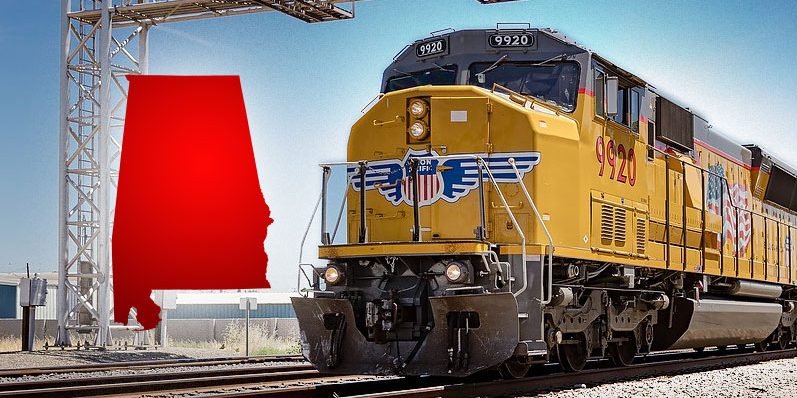The freight rail industry plays a key role in the Alabama economy, providing an existing and reliable transportation mode for many of the state’s key industries. From the growth in the state’s southern ports to the continued recovery in Alabama’s vibrant auto manufacturing sector, private freight railroads are helping spur economic growth.
“Freight rail companies, 25 of which operate more than 3,200 miles of track in Alabama, are key contributors to our community,” says Birmingham City Councilman Hunter Williams.
Everything from retail products bought on store shelves to manufacturing products made in the Southeast generally move at some point on privately owned freight railroads like Canadian National, CSX and Norfolk Southern in Alabama.
Railroads provide public benefits in the process: they take freight off crumbling and financially constrained highways and reduce carbon emissions through inherently efficient operations. U.S. freight railroads, on average, move one ton of freight more than 470 miles per gallon of fuel.
Yet the ability for railroads to meet future freight demand depends upon the continuation of a balanced federal regulatory system enacted on bipartisan grounds 40 years ago. October 2020 marked four decades since enactment of the Staggers Rail Act – a critical piece of public policy that allowed for greater industry freedom while also instilling a safety net for customers who need one.
In doing so, Washington largely removed the government from setting rates between railroads and customers. The law to this day, overseen by the U.S. Surface Transportation Board, protects railroad customers against unreasonable actions while allowing railroads and their customers to largely work together in the confines of the private marketplace.
Indeed, rail reform was necessary and the smart choice over the other option of nationalization. Decades of overregulation and treating railroads more like public utilities left them unable to earn the revenue needed to maintain expensive networks.
“…in the late 1970s and 1980s, Congress acted to lift the price controls on the airlines, the shippers, and the railroads and allow the market to set shipping rates,” says commentator Stephen Moore. The Staggers Rail Act deregulated prices and saved the dying freight trains.”
Since 1980, railroads have invested more than $710 billion in private capital. Additionally, average inflation-adjusted rail rates are 43% lower today than in 1981, while the train accident rate is down 30% since 2000 alone.
“Freight railroads’ massive, post-Staggers investments in infrastructure, equipment and technology transformed a failing rail system into a high-tech, highly efficient, interconnected network that links American communities, businesses and consumers to markets across the country and around the world,” reads a 2020 letter signed by more than 1,000 leaders across the nation in the business and policy world, including the Alabama Policy Institute thirteen others from Alabama.
It is no wonder why the current system is widely supported. It allows markets to work where they do but allows government to intervene where it should.
To sustain the freight railroad industry’s role in the Alabama economy and beyond, public policies – including any legislation from the Alabama Congressional delegation – should continue to incentivize private investment and a healthy rail sector serving its customers.
Ian Jefferies is president and CEO of the Association of American Railroads













